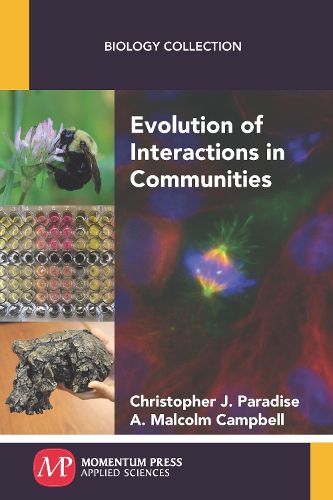Readings Newsletter
Become a Readings Member to make your shopping experience even easier.
Sign in or sign up for free!
You’re not far away from qualifying for FREE standard shipping within Australia
You’ve qualified for FREE standard shipping within Australia
The cart is loading…






Pairwise and diffuse coevolution are defined, with examples that include mutualisms and predator-prey interactions. In any example of coevolution, the costs and benefits to both species involved in the interaction must be assessed in order to understand evolution of the interaction. Models to explain coral bleaching are examined in the context of a coevolutionary mutualism, as are the implications for the possible extinction of coral reefs. Data are examined in order to determine which model is best supported. Other examples of how evolution affects interactions and communities of organisms include adaptation to living in particular habitats and evolution to frequent and somewhat predictable disturbances. For the former, physiological adaptations possessed by some plants to live in low light conditions are described and assessed. Ecological disturbances are defined, and the role of disturbance on evolution of ecological systems is assessed through the use of data. Finally, how time and spatial scales affect disturbances and the evolutionary responses of organisms to disturbances are also examined.
$9.00 standard shipping within Australia
FREE standard shipping within Australia for orders over $100.00
Express & International shipping calculated at checkout
Pairwise and diffuse coevolution are defined, with examples that include mutualisms and predator-prey interactions. In any example of coevolution, the costs and benefits to both species involved in the interaction must be assessed in order to understand evolution of the interaction. Models to explain coral bleaching are examined in the context of a coevolutionary mutualism, as are the implications for the possible extinction of coral reefs. Data are examined in order to determine which model is best supported. Other examples of how evolution affects interactions and communities of organisms include adaptation to living in particular habitats and evolution to frequent and somewhat predictable disturbances. For the former, physiological adaptations possessed by some plants to live in low light conditions are described and assessed. Ecological disturbances are defined, and the role of disturbance on evolution of ecological systems is assessed through the use of data. Finally, how time and spatial scales affect disturbances and the evolutionary responses of organisms to disturbances are also examined.